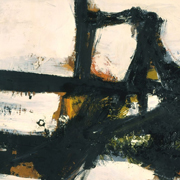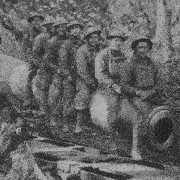|
Scarabrae posted:also got to keep turning off the chat in aljazeera’s youtube stream its loving rancid hate
|
|
|
|

|
| # ? May 30, 2024 20:48 |
|
Calibanibal posted:Some people are saying Palestinians are the Na'vi from James Cameron's Avatar. Others argue Palestinians are the Xenomorphs from James Cameron's Aliens Holy poo poo you're alive! Woo!
|
|
|
|
when questioned about the brutality of hamas atrocities, a hamas soldier responded: "well, we are really just against light and goodness and peace and justice and beauty. we are animals, less than animals really."
|
|
|
|
Spergin Morlock posted:Blinken and Ghislaine were childhood friends lol wut https://archive.ph/GsiqU  https://archive.ph/gutt6 Oglethorpe has issued a correction as of 01:54 on Nov 1, 2023 |
|
|
|
kinda poo poo that drives u insane
|
|
|
|
https://twitter.com/jorfolle/status/1719469585546477817
|
|
|
|
I get home from work and discover the news of the refugee camp being bombed. I am just so sad right now. https://twitter.com/hebagowayed/status/1719497733118021898
|
|
|
|
unreal lmfao
|
|
|
|
it would be just an incredible strategic self-own if Israel mulched all their soldiers worth a drat in those early hopeless surges into Gaza and now they're stuck with reservists who haven't held a gun in a decade
|
|
|
|
|
https://twitter.com/mattlieb/status/1297626961393487872 just remembered this amazing episode
|
|
|
|
Popy posted:kinda poo poo that drives u insane
|
|
|
|
why didn't the refugee camp have a defensive barrier formation in place
|
|
|
|
The show starts with my son and daughter playing with our dog. The dog is old and he`s missing all of his teeth, so the way we feed him is that he sucks off my son so long till my son cums and ejects his sperm into the dog`s mouth. The daughter is there to suck my son`s balls and his anus so that my son gets a little extra out of this feeding ritual as well. After the dog is fed, my daughter gets down on all fours and licks off the dog`s saliva as the dog fucks her rear end in a top hat. My wife comes up, singing the collected hits of duo Platin. The second she sees the dynamic trio, she gets down on her knees and starts rubbing her old, wrinkled pussy. My daughter stops sucking his brother and moves over to her mom. She stands in front of her, pissing all over her mother`s face and naked breasts as my son fucks her in the rear end. The dog is running around, licking the urine that drips all around and as my son`s cums in his sister`s rear end, he crawls underneath them and licks the dripping anus. My wife is now standing up and is dildo loving her daughter from behind, as my son is loving my wife in the rear end. The dog is humping my son and they all move by the tune of “Mary had a little lamb“. Suddenly my son stops and grabs my mother by the throat, starting to choke her. She turns purple, then blue as her veins burst and her eyes pop out of their sockets. The daughter shrieks and runs away, only to be caught by me. I recently had a tetanus shot and something went wrong since my dick is bloated like a balloon. I grab her, throw her in the air and virtually run her through with my cock. At the end of it, there`s her uterus with a little fetus as she was two months pregnant. I walk over to my wife, still with my bleeding daughter hanging on my cock and she takes her off, eating the fetus. My son licks the blood off and my dog finishes what is left of the uterus. We are all very tired and the last thing I manage to say is “So, I see you all got your lunch. I think I`ll have a burger!” I walk over to the fridge, grab a burger, while my son is feeding off her sister`s carcass and my wife is finishing the uterus, pop a beer on my way and sit down to watch a football game. After the game is over and my daughter finally dies with her stomach penetrated and blood gushing all over the stage, the rest of the family gets up, takes a bow, kicks the dog in the rear end, making it topple off the stage and into the band pit, takes another bow and gets off the stage, dragging the body of my daughter behind them, leaving a bloody trail. We all come back one last time to take our last bow. For the longest time, the agent just sits in silence. Finally, he manages, “That’s a hell of an act. What do you call it?” And the father says, “Hamas”
|
|
|
|
https://twitter.com/Kanthan2030/status/1719392339637223919
|
|
|
|
Well! That explains that
|
|
|
|
im sorry to ask but does anyone have israels graph of their casualties by age they reported the other day? thanks in advance dti
|
|
|
|
What the gently caress is with Israel putting bases everywhere? Like holy gently caress. Do they just buy American bases or basing rights and just park a loving base anywhere they please
|
|
|
|
dr. gabor mate discusses the absurd public nature of this genocide https://www.youtube.com/watch?v=yxensYM2R40
|
|
|
|
quote:Libya has decided to expel the ambassadors of #Britain, the #US, #France and #Italy because of their governments' positions on the situation in the #MiddleEast https://libyaobserver.ly/news/libyan-hor-calls-expelling-ambassadors-countries-supporting-israeli-aggression-gaza https://x.com/Africa4Pal/status/1717246335911391330?s=20
|
|
|
|
crepeface posted:https://libyaobserver.ly/news/libyan-hor-calls-expelling-ambassadors-countries-supporting-israeli-aggression-gaza *whispered* Benghazi 2...
|
|
|
|
boy a whole lotta rogue nations suddenly popping up everywhere i wonder what happened
|
|
|
|
This is a lot of jargon to say that they are afraid to use their infantry because they are an incredibly brittle and casualty adverse society.
|
|
|
|

|
|
|
|
I'm prime minister netanyahu cspam like to call me hitler two when I'm killing arabs call me nuttinyahu
|
|
|
|
Good Soldier Svejk posted:it would be just an incredible strategic self-own if Israel mulched all their soldiers worth a drat in those early hopeless surges into Gaza and now they're stuck with reservists who haven't held a gun in a decade I doubt it went over well when the Israeli government announced they'd bagged like ten Hamas guys in exchange for hundreds of billions of dollars worth of war materiel and hundreds of Israeli soldiers. It's no wonder they're pushing the "every Palestinian child is a terrorist" angle so hard, Hamas (and even Hezbollah) has been running circles around them since Oct 7, so they're doing the same poo poo the US did in Vietnam, where they're just "uhh actually victory is measured by kill ratio" and then nuking as many defenseless villages as possible.
|
|
|
|
Nasrallah needs to hurry up https://twitter.com/ytirawi/status/1719487177136931210
|
|
|
|
Yes, exactly. I fully believe (as someone who isn't Jewish myself) that antisemitism has ticked up in recent years. I do not believe the crocodile tears in the corporate press pissing and moaning about Jewish students "feeling unsafe" because someone dared to mention that Palestinians exist in their presence.
|
|
|
|
Puppy Burner posted:The show starts with my son and daughter playing with our dog. The dog is old and he`s missing all of his teeth, so the way we feed him is that he sucks off my son so long till my son cums and ejects his sperm into the dog`s mouth. The daughter is there to suck my son`s balls and his anus so that my son gets a little extra out of this feeding ritual as well. After the dog is fed, my daughter gets down on all fours and licks off the dog`s saliva as the dog fucks her rear end in a top hat. My wife comes up, singing the collected hits of duo Platin. The second she sees the dynamic trio, she gets down on her knees and starts rubbing her old, wrinkled pussy. My daughter stops sucking his brother and moves over to her mom. She stands in front of her, pissing all over her mother`s face and naked breasts as my son fucks her in the rear end. The dog is running around, licking the urine that drips all around and as my son`s cums in his sister`s rear end, he crawls underneath them and licks the dripping anus. My wife is now standing up and is dildo loving her daughter from behind, as my son is loving my wife in the rear end. The dog is humping my son and they all move by the tune of “Mary had a little lamb“. Suddenly my son stops and grabs my mother by the throat, starting to choke her. She turns purple, then blue as her veins burst and her eyes pop out of their sockets. The daughter shrieks and runs away, only to be caught by me. I recently had a tetanus shot and something went wrong since my dick is bloated like a balloon. I grab her, throw her in the air and virtually run her through with my cock. At the end of it, there`s her uterus with a little fetus as she was two months pregnant. I walk over to my wife, still with my bleeding daughter hanging on my cock and she takes her off, eating the fetus. My son licks the blood off and my dog finishes what is left of the uterus. We are all very tired and the last thing I manage to say is “So, I see you all got your lunch. I think I`ll have a burger!” I walk over to the fridge, grab a burger, while my son is feeding off her sister`s carcass and my wife is finishing the uterus, pop a beer on my way and sit down to watch a football game. After the game is over and my daughter finally dies with her stomach penetrated and blood gushing all over the stage, the rest of the family gets up, takes a bow, kicks the dog in the rear end, making it topple off the stage and into the band pit, takes another bow and gets off the stage, dragging the body of my daughter behind them, leaving a bloody trail. We all come back one last time to take our last bow. i appreciate people that copy paste NYT articles to circumvent the paywall
|
|
|
|
https://www.tiktok.com/embed/7295981594123291934
|
|
|
|
Wraith of J.O.I. posted:more of wolf questioning (another) idf spokes person on the refugee camp bombing After all these decades Wolf is going to finally crack ping and show up one day wearing a keffiyeh
|
|
|
|
I think it's keen to note that many white supremacists have taken up the Palestinian cause as a way to stick it to the Jews and not a way to create a humanitarian solution. Like all these people like Hinkle come out of the woodwork and support Palestine and all of this other poo poo simply to forward their own Nazi/ supremacist agenda. Some of the neo-Nazis like Israel because it's what they want, racial isolation. Other neo-Nazis would like to support Palestine because they know that Arab countries in general have 911 as a template for their annihilation. It's far easier to annihilate a free Palestine than it is to annihilate and Israel that is a colonizer state. As well as the fact that if Iran actually does anything against Israel, then the white supremacists win because Jews die and Arabs die in the whole conflict. Clearly you all know my stance on this, and I'm bringing it up as an item of discussion. But we should all be cautious of who we are citing and quoting, even if they are quoting what seems like it lines up with the sensible political opinion. I mean Israel is using this very fact to their advantage, and trying to wrap all Jews into the blanket of Zionism. And trying to again court American Jews with the idea that they are in under threat. It is literally there to forward the agenda of getting more jews to live in Israel and colonize the loving place further. Certain American Jews will see israel as a place where they can feel safe under the iron dome and IDF's Nazi genocide. I mean let's not forget Germany calling up all of the ethnic Germans to come back to Germany before world War II sparked
|
|
|
|
 Whole Book Chapter Whole Book Chapter  From Advanced Land Warfare: Tactics and Operations The Role of Israel’s Ground Forces in Israel’s Wars Abstract Since its declaration of independence, Israel has experienced constant low-intensity warfare punctuated by brief periods of medium to high-intensity warfare. Politically and strategically, these variations in the intensity of fighting are connected and the results of one have often led directly to the other. Israeli ground forces have borne the brunt of this fighting. This chapter provides a synopsis of the evolution of those forces, from Israel’s war for independence until today. The chapter includes five sections, of which the first three provide a background on the origins of the Israeli ground forces, Israel’s threat perceptions, and the role of the ground forces in its strategy for dealing with those threats. The core of the chapter will trace the changing doctrines and organization as they were adapted to the acquisition of new capabilities, lessons derived from combat, and the changing political and strategic situation within which they fought. Introduction Israel has been at war continuously for a hundred years—constant low-intensity warfare punctuated by brief periods of medium to high-intensity warfare. Politically and strategically these variations in intensity of fighting are connected—the results of one often leading directly to the other. Israeli ground forces have borne the brunt of this fighting. This chapter will attempt to provide a synopsis of the evolution of those forces, focusing on the period following Israel’s war for independence from 1949 until today. The chapter includes five sections: the first three sections will provide a background on the origins of the Israeli ground forces, Israel’s perception of the threats, and the role of the ground forces in its strategy for dealing with those threats. The core of the chapter will trace the changing doctrines and organization as they were adapted to the acquisition of new capabilities, lessons derived from combat, and the changing political and strategic situation within which they were fought. Background Israel has been at war since 1920, 28 years before is official establishment. From 1920 until 1948 the Jewish population of Palestine fought to create the conditions to establish a state. Their military forces evolved gradually from a small private security organization, to a national underground defence force that focused on defending Palestinian Jewish communities against attacks by their Palestinian Arab neighbours, and guerrilla operations against British rule, to an overt semi-regular army fighting to define the borders of the new state and connect the separate concentrations of Jewish communities distributed across the country against Palestinian Arab mostly irregular forces and then against the invading regular armies of a number of Arab states. Officially Israel’s war for independence ended in spring 1949 in a series of Armistice Agreements with neighbouring Arab states, but low-intensity fighting continued unabated. To the Israeli leadership it was clear that it was just a matter of time before there was a high-intensity Arab offensive to correct the catastrophe of 1948 and therefore Israel must invest in a military powerful enough to defeat such an offensive, even one conducted by a coalition of Arab states. Although initially based entirely on infantry, the Jewish defence organizations quickly learned the utility of using armoured vehicles—albeit initially improvised ones—aircraft, and ships, so that by the summer of 1948, even though it was still mostly infantry, it was altogether an all-domain force conducting independent aerial and naval actions as well as providing aerial and naval support to ground battles. However, during the war for independence and after it, it was clear the main threats to Israel and the main response to those threats were on land and, therefore, the ground forces were the centre of Israel’s military. By the summer of 1948 the ground forces had diversified to include tanks, armoured personnel carriers, artillery, and combat-engineer vehicles—although the majority were still worn-down second-hand or improvised. The understanding that Israel’s main line of defence were the ground forces and that the aerial and naval forces’ main mission was to support those ground forces remained into the 1990s. Continuous low-intensity fighting between Israel and its enemies was occasionally punctuated by brief rounds of high-intensity fighting. As they fought each other, the rival armies grew in size and competed in acquiring the latest technologies. Older technologies were gradually phased out and up-to-date equipment was procured—most imported but some designed and manufactured indigenously. Throughout, all the rivals remained—and remain—dependent on foreign support to continue fighting. Although the rival air and naval forces participated, the majority of the fighting was between the rival ground forces. However, gradually, as new technologies and the ability to procure them developed, a shift occurred between the relative roles of Israel’s ground forces and air forces, reducing use of the former and increasing use of the latter. This shift, and the vociferous debate it initiated, continues today within the Israeli security community. Perception of the Threat From 1948 onward, Israeli ground forces had to contend with two connected but separate threats. In Israeli national security doctrine these were termed the Routine Threat and the Fundamental Threat. The Routine Threat consisted of the constant low-intensity harassment by Palestinians and by the surrounding Arab states. This was intended to achieve small changes in the borders determined by the 1949 Armistice Agreements, induce Jews to leave Israel, and prepare the strategic situation for the next round.2 The Fundamental Threat consisted of a major high-intensity offensive to capture terrain and perhaps ‘throw the Jews into the sea’. Israel has a much smaller population than most single Arab states, certainly less than a combination of Arabs states. It has no geographic depth to absorb a major enemy ground offensive.3 Initially, virtually the entire population lived within ordinary artillery range of at least one border—some within small-arms range. The successes of 1967 pushed enemy artillery away from Israel’s centre, but the Arabs soon compensated with the acquisition of long-range rockets and missiles that covered, even more so today with improved rocket technology, the entire depth of Israel. Conversely, the Arab states are enormous and populous—much too big to be conquered by an army of a size Israel can create. Furthermore, they can maintain large standing armies, many of them equivalent or superior in size to that of Israel’s military potential at full mobilization. Thus, those Arab states that border Israel can transit from ceasefire deployment to offensive in a relatively short time, leaving Israel with only a minimum of warning time. Neither Israel nor its enemies can manufacture for themselves all the hardware and supplies necessary for war. Therefore, both sides are dependent on the willingness of foreign suppliers to provide or sell them enough to fight. The stocks accumulated before each escalation might be quickly depleted, allowing foreign powers to pressure or support their local dependents. Israel’s National Security Strategy Unable to maintain a standing army big enough to defeat any full-scale enemy invasion, Israel had no choice but to create a large reserve force. In fact, up to 80 per cent of Israel’s fighting power have usually been reserves. Surprise by the enemy means that the small standing army must fight to hold a numerically superior enemy at all costs until enough reserves are mobilized and reach the battlefield. It is naturally preferable to mobilize before a threat consummates but mobilizing mistakenly carries severe economic penalties. Furthermore, as mobilization of the reserves freezes the economy, it is incumbent on Israel to win its wars quickly so as to return reservists to their homes and productive employment. The shallowness of Israeli territory means any enemy success immediately impacts Israeli civilians and national infrastructure. Also pushing Israel to achieve a quick decision is the political pressure that grows on it to desist the longer a war lasts—pressure that might prevent achieving the required military goals. However, given the total asymmetry in size and political power, Israel can never hope to achieve a total military victory following which its enemies could not recover and attack again. Each war might be brief, but the overall conflict is protracted and intractable. All of the above factors dictate the need for brief aggressive campaigns to achieve the required military result: push the battle away from Israel’s civilians into enemy territory; maximal destruction of enemy military capabilities to enable Israeli reservists to go home; and to delay the next escalation because the defeated enemy is deterred and requires time to rebuild his army; and, in some cases, the taking of ground to be used as a bargaining chip for the post-war ceasefire negotiations. The required military result has dictated that the ground forces be the heart of the Israel Defense Forces (IDF). Air power was essential and its unique attributes made it easier to mobilize to full strength, but it could not, on its own, achieve the military results required either against the Routine Threats or against the Fundamental Threats. The IDF was therefore initially designed as a ground-forces army, with air and naval components in support. They might have independent missions (prevent enemy air forces and navies from bypassing the Israeli ground forces to strike Israeli civilians and infrastructure), but their main effort was to assist the ground forces achieve their missions. The Routine Threat required constant action, but the Fundamental Threat was deemed more dangerous. It was therefore decided that the focus of the ground forces equipment, organization, and training would be against a major invasion (termed Fundamental Security), but that the constant border-fighting (termed Routine Security) would not be ignored so that all units of all arms, but infantry especially, and both active and reserve units would also have a secondary capability for these operations and serve rotations in border-security missions. Evolution of the Ground Forces The driving forces behind the evolution of Israel’s ground forces in doctrines, composition, and organization included the discovery or conception of new ideas (adopted only after vigorous debates), the acquisition of new capabilities (new technologies or improved versions of older equipment), identifying problems exposed in combat, and adapting to changes in the perception of enemy capabilities and doctrines and the political background of the wars. This evolution can be roughly divided into five main periods, although the actual transition was never on an exact single day or year. 1948–1956: From Infantry to Armour From December 1947 until mid-May 1948, the IDF ground forces rapidly evolved from an underground militia into a conventional infantry force of twelve brigades. From mid-May, the newly established state of Israel managed to procure a small number of tanks and artillery to support the infantry force. By October 1948 it had acquired enough armoured trucks and buses and armoured personnel vehicles as well as unarmoured cross-terrain vehicles to simultaneously carry up to three of its infantry brigades in long, rapid advances, exploiting gaps in the deployment of the Arab forces in southern and northern Israel, to quickly capture ground and surround portions of the Arab forces, which were then attacked in converging manoeuvres that caused them to flee or surrender. After the war, mechanized infantry supported by artillery and a small number of tanks were the centrepiece of ground-force operational doctrine. Partially this was a continuation of the successes of late 1948, but partially also because of the limitations in the quantity and quality of the equipment procured—mostly discarded worn-out Western Second World War equipment.7 Thus, in the early 1950s, exercises with Sherman tanks usually ended with most halted because of mechanical failures.8 One senior Israeli general even suggested that the only way to use the tanks was to have them carried behind the infantry on truck-towed flat-bed semi-trailers, unload them just short of the objectives in order for them to provide direct-fire support for the infantry attack, and then load them again on the trucks to be carried to the next battlefield.9 In May 1956 the source-barrier was finally broken with France agreeing to sell Israel first-hand or at least fairly new second-hand weapons. A concentrated effort, several months long, refurbishing the older tanks and other heavy equipment provided a new capability which was proven for the first time in Israeli tank units crossing the Sinai with a minimum of breakdowns. The 1956 Suez War operational plan was to break through Egyptian defences with infantry night attacks supported by artillery and then send the mechanized infantry through the corridors to exploit into the depth of Sinai supported by tanks used as direct-fire mobile artillery. This was a magnified repeat of the last operations conducted in 1948. In fact, the newly refurbished tank units quickly took the lead, defeated Egyptian tank units and assaulted through Egyptian fortifications with the mechanized infantry following in their wake to mop-up behind them.10 This contrasted with failures by some of the infantry and mechanized infantry units in their missions. 1957–1973: The IDF Blitzkrieg One of the major lessons of the Suez War was the usefulness of tanks in achieving the operational objective of relatively fast long-range manoeuvres through difficult terrain complemented by a powerful assault capability, whilst exposing a minimum of personnel to enemy fire. The 1956 Suez War added another major source for the procurement of arms—Britain. Also, in the early 1960s West Germany agreed to sell second-hand but not worn-out tanks to Israel. The lessons of the Suez War and the availability of better, especially more mechanically reliable, tanks focused the Israeli ground force build-up over the next decade on increasing the tank forces from 5 battalions in 1956 to 20 battalions in 1967. The total number of infantry battalions, approximately 50,12 was not reduced, but more of them, eight instead of four, were provided with armoured personnel carriers (APCs), to enable them to follow the tanks. Extra APCs were also purchased to enable temporary, mission-specific, conversions of infantry and paratroop battalions into mechanized infantry. Whereas in the 1950s only infantry were employed in the constant skirmishes along the borders, in the 1960s tanks too were employed. The tanks conducted precise long-range fire on enemy targets without crossing the border, in lieu of using artillery or aircraft because using these was considered too escalatory. In addition to stealthy infantry retaliation raids, a number of tank and mechanized infantry raids were also conducted. The increased use of the tanks in actual combat exposed various deficiencies in crew training. Again too many tanks broke down, but a review showed the problem was not the tanks themselves but training crews to maintain them. The most glaring and embarrassing failures were in tactical use and gunnery accuracy. Following a particularly embarrassing failure, in which 89 rounds were fired at two Syrian tanks at a range of 1,200 meters and not one hit, the armoured corps underwent a major revision of tactics and tactical and mechanical training. The revision led to the spectacular successes of the tank units in the 1967 war. Tank forces lead the way in almost every attack in almost every terrain, including hilly and built-up terrain. Wherever possible the tank units attempted to bypass enemy obstacles and fortifications through terrain deemed by the enemy to be unpassable for traffic and therefore less strongly defended. The tanks broke through enemy defence lines, followed by the infantry who cleared enemy positions whilst the tank units continued to advance.15 Only where there were not enough tanks, or the terrain proved exceedingly difficult to cross, did the infantry lead. The typical attack began with the tanks moving into positions at the extreme range from the objectives of their guns and sniping at all observed targets (tanks, anti-tank guns, other heavy weapons, and bunkers) on the objective or around it. After all these had been destroyed, the artillery fired concentrated barrages to suppress the enemy whilst engineers cleared paths through obstacles. Then the tanks rushed through these paths and to the depth of the enemy deployment to engage enemy reserves (usually tanks) and exploit the operational rear of the theatre. Meanwhile, the infantry following the tanks cleared the enemy positions left behind along the route of advance to enable the safe passage of supply convoys and reserve units. Israeli artillery was mostly towed and therefore participated only in the initial breakthrough battles—not being able to keep up with the tanks or APC-mounted infantry during the exploitation that followed. The lessons of 1967 enhanced the lessons of 1956 so that the Israeli ground forces from 1968 to 1973 further focused on increasing their tank and mechanized infantry units. Again the infantry was not reduced, but the tank arm was increased to almost 50 battalions. Furthermore, doctrinal changes placed even more focus on tanks being the main arm in almost every conceivable situation and organizational changes were made to further this concept. From 1949 until 1968, Israeli ground forces were organized in mixed-arm brigades: infantry/paratrooper brigades were all-arm minus tanks; mechanized infantry had two APC-mounted infantry battalions and one tank battalion, but otherwise were identical to infantry brigades except for additional necessary logistic and ordnance functions; armoured brigades had two tank battalions and one mechanized infantry battalion and all the other arms as well. Divisions were task-forces—a permanent headquarters receiving units as required by the current mission. In each arm there were also a number of independent battalions to be used to reinforce brigades of whatever type if required by their mission. In 1968 the armoured forces were reorganized to suit the new doctrine. All divisions became permanent armoured divisions: two tank brigades, one armoured infantry brigade, an artillery group, and a permanent complement of engineers, plus reconnaissance and logistics units. The tank brigades had the same number of tanks as previously divided between three (instead of two) tank battalions and the former infantry battalion was disbanded, its companies being permanently attached, one each, to the tank battalions. The armoured infantry brigade maintained the original structure of mechanized infantry brigades. Non-mechanized infantry brigades, including the paratroopers, were maintained as independent brigades to be allocated according to requirements. Some of the independent regular infantry received APCs to replace trucks, but otherwise remained the same. The new doctrine was challenged in the 1973 war and various deficiencies were found. The surprise offensive, which caught Israel unprepared with only small forces at the front facing enormous odds, affected a proper appreciation of many of the lessons of that war. The Syrian offensive was focused on an armoured attack supported by an enormous artillery forces, whereas the Egyptian offensive focused on infantry saturated with anti-tank weapons and supported by an even bigger artillery force and tanks. The initial Israeli lessons were: first, a need to increase the total size of the ground forces and especially of the regular component so that a surprise attack would not have such a numerical advantage in the future; second, that the reliance of the ground forces on the air force for fire support was mistaken and required an increase in the quantity and mobility of the artillery arm; and third, that the emphasis on tanks as the leading ground arm had been correct in general but exaggerated in practice so that better combined-arms training was required; fourth, that the mechanized brigades had in fact failed as an organization—they had usually employed their tank battalions only with the infantry providing just ancillary support, henceforth all brigades would be single-arm, tanks or infantry, and combined-arms task-forces would be created on a mission by mission basis by cross-attaching battalions between brigades.17 1974–Mid 1990s: ‘The Manoeuvre Crisis’ By 1979, a crash implementation of the lessons of the 1973 war increased the overall size of the Israeli ground forces from one regular division plus a number of independent brigades and five reserve divisions (some of the independent regular brigades belonged to reserve divisions when these were activated) to three regular armoured divisions plus a few independent brigades, nine reserve armoured divisions, a reserve paratroop division, and a reserve infantry division. The mechanized brigades were abolished and all the tanks were concentrated in tank brigades (three per armoured division), but all infantry units, including the paratroops, were equipped with APCs. By 1982 Israeli ground forces numbered approximately 90 tank battalions, 80 infantry battalions of all types, and 80 artillery battalions (each artillery battalion was increased from 12 guns in 1973 to 18)—a 1.8 increase in tank battalions, a 1.6 increase in infantry, and a 2.4 increase in artillery.18 The entire artillery force was re-equipped with new self-propelled 155 mm guns instead of the previous assortment of various calibres of towed guns and improvised self-propelled artillery—much of it mortars. In 1982 this mostly armoured force attacked into Lebanon, fought Palestinian regular and guerrilla forces and the Syrian army in hilly and mountainous terrain dotted with numerous small to medium sized villages and towns and a number of cities. Despite the terrain, on most axes of attack the Israeli forces led the advance with tanks supported by mobile artillery. Rather than employ infantry to lead the offensive through the difficult terrain, it was employed only where tanks failed, and then also usually to support the tanks by outflanking enemy positions through terrain impassable to tanks to attack them from the rear and open the route for the tanks, clearing houses along routes, etc. Only on one axis did infantry lead the advance. The preference to lead with tanks in hilly to mountainous terrain was contrary to accepted knowledge, however the Israelis preferred it because, although the tank units would have more difficulty and take more vehicle casualties, the total number of human casualties would be lower. From the late 1970s a new problem and a new technology entered the doctrinal discussions of the Israeli ground forces. The new problem was that the size of the rival armies was continuously growing whereas the size of the theatres of operation were not. Given the Israeli preference to outmanoeuvre enemy forces rather than attack them head-on, this was a major issue—enemy forces were creating gapless defence lines echeloned in depth. Thus, as a typical example, the Syrian army in 1948 had employed three brigades, in 1967 9 brigades, in 1973 25 brigades and by the mid-1980s had 60 brigades available to it. The Golan Heights theatre had not grown by one centimetre. The new situation was termed ‘the manoeuvre crisis’ and ‘the saturated battlefield’. It was clear that no matter how much Israel improved its ground force equipment and training, fighting through such dense and deep arrays would entail casualties too heavy and a duration that would be too long for Israel to achieve its typical strategic goals—annihilating enemy forces and capturing terrain to serve as bargaining chips for the expected post-war diplomacy. The new technology of accurate long-range munitions seemed to offer a solution. In terms of defence, they would enable the Israeli forces to start to destroy attacking enemy units long before they reached positions from which they could engage the Israeli ground forces awaiting them on the border. Also, because of their range, a few such units, centrally located, could engage enemy units on different sectors of the front merely by shifting their aim and could thus rapidly reinforce outnumbered Israeli defenders long before other reserve ground units could be sent to them. In terms of offence, the new munitions would enable Israeli forces to drastically diminish dense enemy units prior to approaching them, engaging them with tanks and infantry, and attempting to attack through them. It would be a radical enhancement of the previous Israeli attack tactic of first using precise tank fire at the extreme range as described above and, if successful, could be used to create corridors for manoeuvre. That manoeuvre would be conducted according to the same ideas used in 1967, 1973, and 1982—thrust to the depth, surround, and destroy enemy forces. Mid 1990s–2006: The Impact of the IDF Revolution in Military Affairs on the Ground Forces No war broke out in the mid 1990s up to the mid 2000s, enabling an assessment of the capabilities and limitations of the new ideas and technology. However, meanwhile, in the 1980s, Israel suffered a financial crisis that compelled a drastic reduction in defence spending, followed by a gradual reduction in the overall size of the IDF, including the ground forces. Gradually, as the technology improved, and inspired by the conduct and results of the Kuwait War (1991) and Kosovo War (1999), the new concept evolved into a belief that the thinning process itself would be sufficient to defeat the enemy—ground manoeuvre would be superfluous or only minimal to prove the point achieved by standoff fire alone. For the casualty-sensitive Israeli leadership, it seemed like a perfect solution. Another cause for change in the size and composition of the ground forces was the shift in perception of the threat. Whereas until 1973 the threat was perceived as a balance between Fundamental Security and Routine Security, with Fundamental Security deemed more dangerous and so the focus of attention in weapons procurement and training, Routine Security was still being catered to—especially in strategic planning and thinking. After the traumatic 1973 war, Routine Security, although still required, was virtually ignored in procurement, training, and strategic planning and thinking. However, gradually, as the durability of the 1979 peace treaty with Egypt was accepted and following the destruction of Iraq’s military might in the 1991 Kuwait War and the demise of the Soviet Union as a superpower backer of Israel’s enemies, and the euphoria of the peace process with the Palestinians set-in, the perception of the threat changed: the Fundamental Threat had receded and only the Routine Threat remained. The future would entail almost only counter-guerrilla and counter-terrorist operations. Furthermore, the constantly improving technologies of accurate long-range munitions would ensure that if a Fundamental Threat did emerge, major ground manoeuvres were almost unnecessary. Enemy offensives would be defeated, the enemy army destroyed, and the enemy state would be cowed into submission by fire only. The exact numbers have not been published, but it is clear that the Israeli army today is much smaller than it was 30 years ago—entire divisions and brigades have been cancelled. Furthermore, tank and artillery units have been cut the most, with some of the cuts being used to create new infantry units—especially in the regular army: in 1973 the regular army had two infantry brigades, in 1985 it had four and today it has five plus a commando brigade as well as a plethora of independent infantry battalions and various special operations units equivalent to at least two more brigades. This shift in composition expresses the shift of the focus from mechanized manoeuvre warfare against state armies to counter-guerrilla and counter-terrorist warfare. Initially it seemed that this direction was justified—fighting in the 1990s and early 2000s was indeed only against non-state forces conducting terrorist or guerrilla campaigns against Israel. From 2000 to 2006 the Palestinian Terror Offensive was essentially defeated by an infantry-focused counter-terror and counter-guerrilla campaign. Tank and artillery units were hurriedly retrained to improve their infantry skills and used as second-rate infantry on secondary missions. Regular warfare training for both the regular army and the reserves ceased almost completely. Even when it became clear that major operations were necessary to clear areas controlled by Palestinian terrorist groups, they were mostly in urban terrain. No artillery was used and only small numbers of tanks were used to support infantry through a minimum of direct short-range fire. The use of APCs was not an operational manoeuvre, but used to enable the infantry to move short distances through Palestinian small-arms fire until they dismounted to fight from house-to-house. However, the 2006 war against Hezbollah in southern Lebanon shocked the IDF. Following the Israeli withdrawal from its southern Lebanon buffer-zone in 2000 and whilst the Israeli ground forces were fighting and converting to an almost purely counter-guerrilla and counter-terrorist force from 2000 to 2006, Hezbollah was evolving in the opposite direction—equipping, organizing, and training to conduct regular warfare. By 2006 they had begun to acquire the capability to conduct company-sized regular defensive battles. Initially Israel responded to another, but more disastrous, Hezbollah attack on an Israeli border patrol with air strikes only. It attempted to employ the new concept of victory through accurate standoff fire to defeat Hezbollah. Hezbollah responded with an indiscriminate rocket-artillery bombardment of Israeli towns and villages. After Israel’s fire-only strategy failed to compel Hezbollah to desist from firing its rockets into Israel, Israel was forced to employ its ground forces to capture the territory from which the majority of those rockets were being launched. The result of the ground incursion can best be summed-up in the words of an Israeli paratrooper battalion commander after the war: ‘I entered Lebanon to arrest terrorists and collided with a regular army …’24 Having not trained for this type of combat for several years, the Israeli ground forces suffered one tactical setback after another (in one example a whole Israeli division needed more than 36 hours and suffered dozens of casualties to cross a few kilometres of ground whilst faced with the equivalent of one infantry company with a few anti-tank missile launchers).25 Gradually through sheer persistence, superior numbers, and superior firepower, the Israelis wore down the Hezbollah ground units facing them and managed to achieve some territorial gains but much less than had been planned. However, the ground operations did force Hezbollah to expose more of its personnel, who had spent the fires-only phase of the Israeli offensive hidden in underground bunkers, civilian houses, and the dense woods and scrub of southern Lebanon. Finally, accumulation of attrition and the exhaustion of Hezbollah forces, led to an inability to reinforce or resupply their forward forces, and brought them to agree to a ceasefire. 2006–Present: Continuous Debate on the Role of Ground Forces The major initial lesson of the 2006 war was that the Israeli ground forces had lost their ability to conduct regular warfare, whereas the irregular enemy was simultaneously acquiring exactly that ability.26 The central message for the IDF ground forces over the next few years was: ‘back to the basics’.27 The ground forces entered a period of intensive training to reacquire the lost skills. The next major ground operation was against Hamas in Gaza in early 2009. Hamas had been trying to follow the path of Hezbollah, but had not yet achieved the same capability when its escalating rocket fire against Israeli civilians triggered an Israeli offensive that, as in Lebanon 2006, began with precision fire strikes and was followed by a ground offensive that employed three infantry brigades reinforced with tank units and a tank brigade to surround Gaza City, whilst capturing a number of smaller suburbs and villages around it. In November 2012 another Israeli offensive, responding to an escalation of Hamas rocket fire and cross-border raids, involved only a week of heavy standoff fire that achieved the coveted strategic result—a drastic reduction in Palestinian attacks over the following fifteen months. This success lulled the Israeli security leadership to believe that the new methods had finally become effective. However, the next escalation, in summer 2014, conducted at first only with fire, once again required the employment of large ground forces (three divisions) conducting combined-arms regular warfare. It also showed, at least to some, that even if fire alone could perhaps achieve the desired final outcome, the enemy had learned to absorb this fire sufficiently to prolong the war considerably—the war of the summer of 2014 against a vastly inferior military force lasted 50 days as compared to the 6 days of 1967 and the 19 days of 1973 in which the IDF faced considerably stronger enemies. Conversely, although much longer, both the war against Hezbollah in 2006 and against Gaza in 2014, cost Israel only a very small fraction of the casualties suffered in those shorter more intense wars. However, although some in the IDF read the lessons of the 2006, 2009, and 2014 wars as requiring the rebuilding and maintenance of a massed manoeuvre capability similar in principle if not in details to the capability of the past, many in the IDF continued to believe that the new technologies had changed the reality of the battlefield to an extent that made ground manoeuvre, or at least massed mechanized ground manoeuvre, archaic. At present there are three schools in the IDF debating what Israel’s doctrine vis-à-vis its current and near-future threats should be: No manoeuvre: Boosting defence systems against missiles and rockets and conducting offensive action with only accurate standoff fire based on target information collected by increasingly sophisticated intelligence technologies. Since Israel knows in advance where and against whom it will fight—only the when is unknown—Israeli intelligence continuously collects targets to create long lists that are as up-to-date as possible on the day an escalation flares-up.30 These are to be struck immediately on the first few days of each escalation—the exact targets chosen depending on the strategy and operational goals. One problem exposed in past operations has been that within a few days all targets on the lists have been hit and often the damage caused is not enough to induce the enemy to desist from further fighting. Furthermore, not all enemy assets are stationary, so that shortly after the war begins targets move and the targeting information collected previously might become irrelevant. However, proponents of this concept, especially the air force and intelligence, have invested heavily in creating the ability to rapidly detect and strike previously unknown targets. In May 2014 the Air Force Commander claimed that the Israeli Air Force had multiplied its ability to strike targets at a rate four times greater than in the Second Lebanon War.31 In theory, the ability to continuously detect, identify, and precisely strike hundreds of worthwhile targets per day, should suffice to bring any enemy to its knees. Ground forces are to be used only to defend the border against enemy incursions and conduct armed-police style counter-guerrilla and counter-terrorist operations with a minimum of heavy weapons. Limited ‘sophisticated’ manoeuvre: Essentially similar to the first school, this school believes that modern intelligence technology cannot completely replace a human presence in the heart of the enemy’s deployment areas, and therefore adds the employment of a multitude of small infantry teams, assisted by ‘swarms’ of small remotely-piloted aircraft, to help uncover the enemy’s positions, communicating these by network technology to aircraft and ground-launchers that would then destroy these targets within seconds or mere minutes by standoff fire from afar. A test unit was set up a few years ago and has been conducting experiments and exercises to validate the concept. During the May 2021 escalation of fighting with Gaza, the unit was deployed on the border of Gaza and conducted actual operations to detect and destroy Palestinian rocket-launchers and guided anti-tank missile launchers firing into Israel. Improved Traditional Manoeuvre: This school argues that the above capabilities and concepts might indeed suffice in some scenarios, that is, when the enemy is not determined to fight and wishes only to achieve a very limited goal. However, when fighting a strong enemy who has set for himself a more ambitious goal and is therefore determined and ready to fight, they would, as shown in the past, fail or take a very long time to succeed—time that would be exploited by the enemy to fire thousands, even tens of thousands, of rockets on to Israeli civilians.33 In these scenarios, only the employment of massive forces, conducting traditional fire and movement combined-arms operations with large formations would be able to disrupt the enemy’s strategy and annihilate enough of his forces within a reasonable time-frame so as to convince him to give up his political and strategic goals. In these scenarios, the above concepts would only be a preliminary preparation or a supporting action to the coup-de-grâce of the mass manoeuvre conducted with tanks and infantry units supported by the new sophisticated fire capabilities. The new fire capabilities would be employed by the addition of an ‘expose/attack’ company to each infantry and tank combined-arms battalion team. The ‘expose/attack’ company would employ small drones to scout the terrain ahead and around the battalion in order to discover enemy forces or equipment and direct precise fires onto them. Depending on the characteristics of the target, the fire would be a short-range portable guided missile carried by the unit itself or a longer-range guided artillery missile or an air strike. After the initial fires had destroyed or suppressed the enemy, the battalion would assault the position with infantry and tanks. Whilst the IDF has stated in its latest strategy document that it is committed to land manoeuvre,35 IDF Chief of Staff, General Aviv Kochavi (2019 – 2023) is a strong advocate of option B. This is clearly expressed in Kochavi’s five-year force development plan ‘Momentum’ (Tnufa) which aspires to create a networked military with an emphasis on rapid multiple target detection and allocation of sensors to munitions. Kochavi’s most notable manifestation of his concept is the experimental unit dubbed ‘the Ghost Unit’, which combines special operations forces and elite infantry with enhanced cyber and drone capabilities in addition to soldiers from the air force and field intelligence. These forces are trained to infiltrate enemy territory to locate targets, communicate their precise location to a long-range weapon-launcher firing precise munitions to destroy them.36 It remains to be seen if the next IDF Chief of Staff will continue Kochavi’s direction or will opt for one of the other two options presented above. The shift of focus from manoeuvre to precision standoff fire has been accompanied by a shift in the role of the reserves from the primary force to a secondary one. Furthermore, despite the lessons of the Second Lebanon War, this shift has been followed with a reduction in training for the reserves.37 In any case, it should be noted that currently the IDF still fields a notable armour fleet of about 1,450 tanks (Merkava Mk 3 and Mk 4) and all its infantry brigades are equipped with APCs, whether of the heavy models (Namer, Achzarit) or the older M113 which IDF plans to replace with an advanced and better protected local design, the Eytan. The vast majority of the tanks are in reserve units, whereas the heavy APCs are more evenly distributed between regular infantry and reserve infantry units. Conclusion The geostrategic situation and the nature of Israel’s enemies dictated that the IDF was developed and centred primarily on land forces. A reflection of this reality was the fact that its Chief of Staff—actually the commander-in-chief of all Israel’s armed forces, land, sea, and air—has always, with one exception only,38 been selected from the land forces and was generally considered to also be the specific direct operational commander of the land forces. The IDF evolved from an underground guerilla fighting force before the establishment of the state, to infantry brigades upon its establishment and then gradually transitioned to armour divisions conducting high tempo mobile combined arms operations. During the 1990s, new technologies enabled more precise standoff fire. A new concept gradually evolved preferring reliance on fire from afar over land manoeuvre. This development coupled with a reduction of the Fundamental Threat (a major ground invasion) led to a decline in the IDF’s ability to conduct large mobile combined-arms operations. In the 2006 Second Lebanon War, the deliberate degradation of ground manoeuvre capabilities was exposed by Israeli tactical failures against Hezbollah. Following the poor demonstration of land forces in this war there was a renewed focus on reacquiring ground manoeuvre capabilities. However, the role of the land forces in the IDF is still subject to debate to this day.40 On the one side, the proponents of improving standoff fire technologies as a substitute for manoeuvre argued that manoeuvre should be limited and sensor-saturated in order to rapidly discover enemy locations and pass them on to the fire-forces. On the other side, a ‘back to the basics’ approach that argued that, although the new technologies did improve fire capabilities and should be added to the traditional manoeuvre units to increase their lethality, they did not enable fire to fully replace aggressive large-force manoeuvres that found and defeated the enemy whilst conquering ground. The IDF latest multiyear force build up plan Tenufa (Momentum) seems to be an attempt to find a middle ground between these two approaches.
|
|
|
|
smoobles posted:I condemn the terrorist government of Israel
|
|
|
|
Who described the IDF as barely trained, barely motivated, cops backed up by an Air Force? Come collect your prize.
|
|
|
|
Marenghi posted:New atrocity propaganda just dropped. Blinken claiming Hamas dismembered a family alive in their kitchen before executing them. And after sat down to eat a meal surrounded by that gore. Does Israel have a battalion of guro fanfiction authors pumping out this poo poo?
|
|
|
|
智利总统加布里埃尔·博里奇表示,鉴于博里奇所说的以色列在加沙地带违反国际人道主义法的行为“不可接受”,智利政府正在召回驻以色列特使豪尔赫·卡瓦哈尔进行磋商。 https://www.aljazeera.com/news/liveblog/2023/11/1/israel-hamas-war-live-anger-grows-over-israeli-attack-on-gaza-refugee-camp Chile recalls its ambassador to Israel over ‘unacceptable’ violations in Gaza 35m ago (00:25 GMT) Chilean President Gabriel Boric said his government is recalling its envoy to Israel, Jorge Carvajal, for consultations in light of what Boric said were “unacceptable” violations of international humanitarian law by Israel in the Gaza Strip. In a post on social media, Boric said his government “strongly condemns” the Israeli offensive in the besieged Palestinian enclave. The Israeli military’s operations amount to “collective punishment of the Palestinian civilian population”, the Chilean president said.
|
|
|
|
哥伦比亚还召回驻以色列大使进行磋商 https://www.aljazeera.com/news/liveblog/2023/11/1/israel-hamas-war-live-anger-grows-over-israeli-attack-on-gaza-refugee-camp Colombia also recalling ambassador to Israel for consultations 18m ago (00:45 GMT) Left-wing President Gustavo Petro made the announcement on social media. “If Israel does not stop the massacre of the Palestinian people we cannot be there,” Petro wrote on X, formerly Twitter.
|
|
|
|
So many idf tiktok videos give of christian youth group hanging out vibes.
|
|
|
|
moths posted:"I call again from the phone of a Jew, now with news of dinner!" lol
|
|
|
|

|
| # ? May 30, 2024 20:48 |
|
据路透社报道,比利时运输工人工会周二呼吁其成员拒绝处理运往以色列与哈马斯枪手作战的军事装备。 https://www.theguardian.com/world/l...f089b59d570dc70 Belgian transport workers’ unions call for refusal to handle arms bound for Israel 2h ago 23.28 GMT Belgian transport workers’ unions on Tuesday called on their members to refuse to handle military equipment being sent to Israel to battle Hamas gunmen, Reuters reports. The ACV Puls, BTB, BBTK and ACV-Transcom unions said in a joint statement that airport workers have seen arms shipments. “While a genocide is under way in Palestine, workers at various airports in Belgium are seeing arms shipments in the direction of the war zone,” the statement said. Israel says it is targeting Hamas military operations and not civilians in Gaza. On Tuesday Israeli airstrikes killed dozens of people at a refugee camp in northern Gaza. The Israeli military said it had targeted the camp to kill Hamas commander Ibrahim Biari.
|
|
|





































